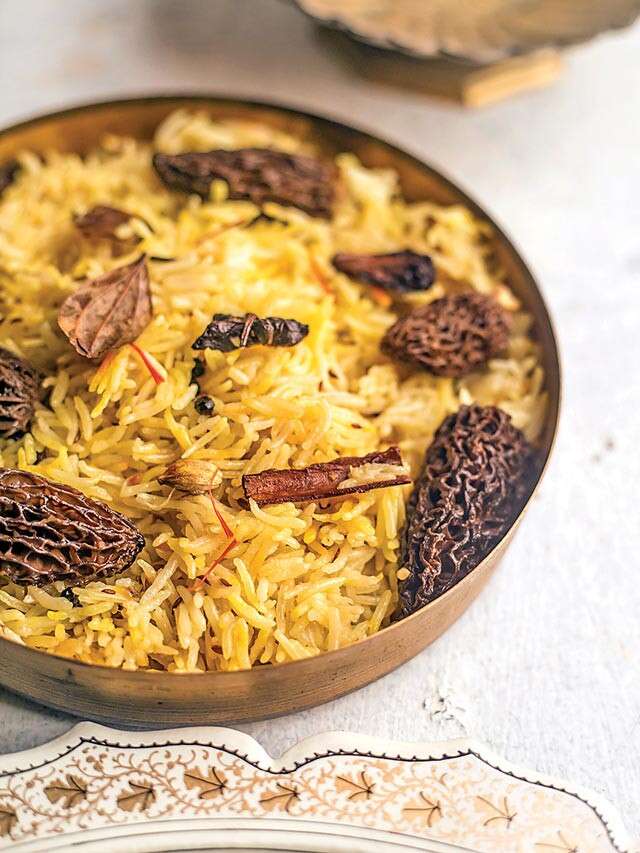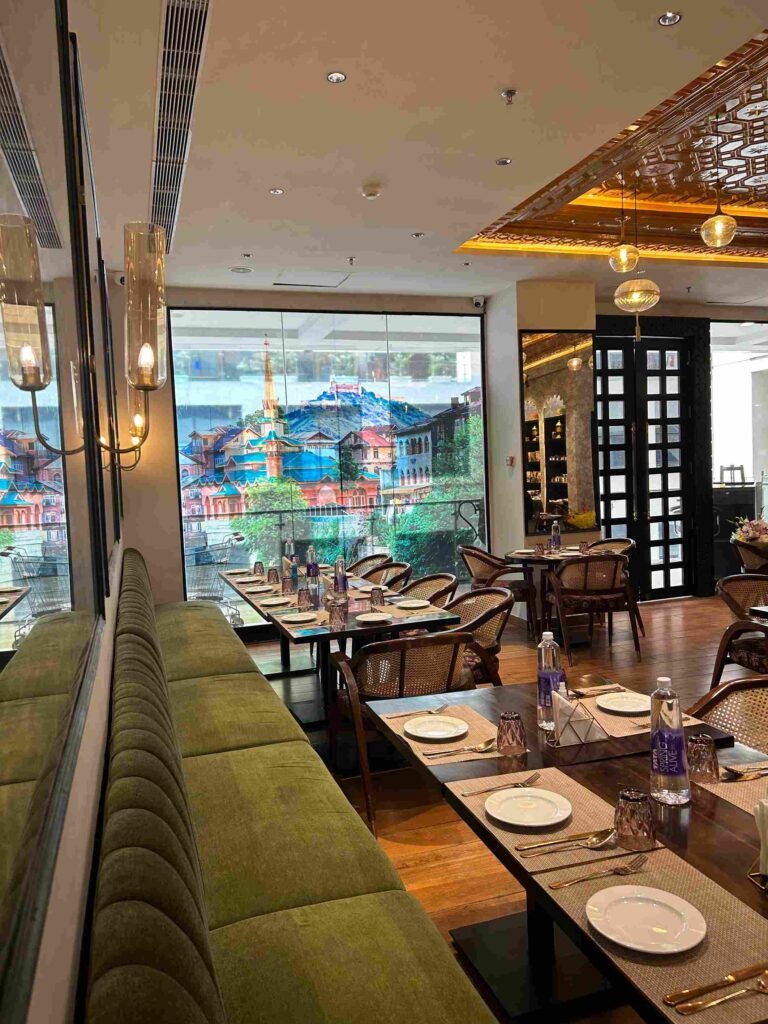When it comes to flavour-packed cuisine, Kashmir stands out with its rich and aromatic spices. This hidden gem of northern India, Kashmir, is not only home to serene lakes and breathtaking landscapes, but it’s also a cuisine paradise that will transform your kitchen. So, let’s embark on a spicy adventure and explore the magic of the Kashmiri spice market, which can transform any dish into a delightful feast!
The Essence of Kashmiri Cuisine
Kashmiri food is exceptionally varied and delicious due to its distinctive fusion of Indian, Persian, and Central Asian flavours. The hallmark of this cuisine lies in its use of spices, which are not just about heat but about depth, aroma, and complexity. Whether it’s the tender Roganjosh or the sumptuous Yakhni, Kashmiri dishes owe their charm to the spices that define them.
The Spices That Make Kashmiri Food Special
Trust me, it’s a good idea to buy Kashmiri spices online, provided with lots of options. These unique spices make Kashmiri cuisine so distinct and flavourful. Let’s explore the essentials that define this rich culinary tradition.
1. Saffron (Kesar)
Saffron, the golden spice, is the pride of Kashmir. Harvested from the delicate crocus flower, saffron adds a beautiful colour and a unique flavour to dishes. A pinch of saffron, one of the prized Kashmir spices, can elevate a simple rice dish to a royal treat. It’s essential in many Kashmiri dishes like Pulao and Kehwa (a traditional Kashmiri tea). You can easily find high-quality saffron online to add that special touch to your culinary creations.
2. Kashmiri Red Chilli Powder (Kashmiri Lal Mirch)
Kashmiri lal mirch is famous for its vibrant colour and mild heat. Unlike regular chillies, it imparts a rich red hue to dishes without overpowering them with spiciness. This makes it perfect for dishes like Roganjosh and Dum Aloo, where colour and flavour are equally important.
3. Dry Ginger Powder (Saunth)
Dry ginger powder, known locally as Saunth, is a staple in Kashmiri kitchens. It brings a warm, zesty flavour to dishes and is commonly used in Wazwan (a traditional Kashmiri multi-course meal). Sonth is particularly favoured in gravies and soups, adding a hint of spice that is both comforting and refreshing.
4. Fennel Powder (Saunf)
Fennel powder is another essential spice in Kashmiri cooking. With its sweet and liquorice-like flavour, it balances the heat from other spices and adds a refreshing touch to dishes. Fennel powder is a crucial ingredient in the famous Kashmiri Yakhni, a yoghurt-based mutton curry that is a treat for the taste buds and great for gut health.
5. Asafoetida (Hing)
Asafoetida, or Hing, is known for its pungent aroma and is used sparingly in Kashmiri cuisine. It’s usually added to dishes in the tempering process to enhance the overall flavour profile. A little pinch goes a long way in making dishes like Nadru Yakhni (lotus stem curry) and Rajma (kidney beans curry) more delectable.
6. Cloves (Laung)
Cloves are tiny but mighty in terms of flavour. They bring a warm, sweet, and slightly peppery taste to Kashmiri dishes. Often used in rice dishes and meat curries, cloves add depth and complexity to the flavour. In Kashmiri Pulao, cloves are one of the key spices that make the dish aromatic and flavourful. You’ll often find these prized cloves in the vibrant Kashmiri spice market, where the aroma of various spices fills the air.
7. Cinnamon (Dalchini)
In Kashmir, cinnamon sticks, or Dalchini, are frequently used in both savoury and sweet recipes. They provide a lovely, woody flavour that enhances meat curries and rice dishes. Cinnamon is particularly prominent in Rogan Josh and Pulao, where it contributes to the rich, layered taste.
8. Cardamom (Elaichi)
Cardamom is a spice that adds a sweet, floral note to dishes. In Kashmiri cuisine, both green and black cardamom are used. Green cardamom is often added to desserts and beverages like Kehwa, while black cardamom imparts a smoky, robust flavour to meat dishes and biryanis.
9. Caraway Seeds (Shahi Jeera)
Caraway seeds, also known as Shahi Jeera, are used for their slightly sweet and peppery flavour. They are an essential ingredient in many Kashmiri meat dishes and rice preparations. Shahi Jeera is often toasted to bring out its nutty flavour before being added to dishes.
10. Bay Leaves (Tej Patta)
Kashmiri curries and rice dishes benefit from the slight flavour enhancement provided by bay leaves. They are typically used whole and removed before serving. Bay leaves release their flavour slowly, making them perfect for slow-cooked dishes like Yakhni and Roganjosh.
Try the Fusion of Spices at Kanz & Muhul by Matamaal
Matamaal’s Garam Masala by K&M
Discover the rich blend of traditional Kashmiri spices in Matamaal’s Garam Masala, crafted by Kanz & Muhul. Roasted and ground to perfection, this spice mix adds depth and warmth to any dish. Packed with antioxidants and nutrients, it offers various health benefits, including immune support and inflammation reduction. Store Kanz & Muhul by Matamaal’s Garam Masala in a cool, dry place for up to 12 months to maintain its freshness.
Matamaal’s Kashmiri Kehwa Blend by K&M
Experience the essence of Kashmir with Matamaal’s Instant Kehwa Blend, a delightful beverage infused with the flavours of Kanz & Muhul. This traditional Kashmiri tea boasts a nutty richness and a subtle sweetness. It’s gluten-free, vegan, and packed with health benefits like improved digestion and immunity boost. Just add a teaspoon to boiling water for a fragrant cup of Kehwa in minutes. Enjoy Matamaal’s Kashmiri Kehwa Blend by Kanz & Muhul at home and savour its unique blend of spices.
K&M by Matamaal’s Golden Concoction
Enjoy the transforming power of Matamaal’s expertly made Golden Concoction. This drink, which contains a blend of turmeric, ginger, and cinnamon in the milk, presents a Kashmiri beverage with a burst of colour and a whisper of warmth and good health. Accept its possible health advantages and infuse your culinary creations with a hint of golden magic.
Cooking Tips to Bring Out the Best in Kashmiri Spices
Using Kashmiri spices is an art. Here are some tips to help you make the most of these aromatic wonders:
- Toasting Spices: Gently toast whole Kashmir spices like cloves, cinnamon, and fennel seeds before grinding them. This enhances their flavour and aroma.
- Fresh Ground: Whenever possible, grind your spices fresh. This ensures maximum flavour and fragrance.
- Balancing Act: Kashmiri cuisine is about balance. Don’t let one spice dominate. Aim for a harmonious blend, much like what you would find in the bustling Kashmiri spice market.
- Infusion: For beverages like Kehwa, allow spices like saffron and cardamom to infuse in warm water or milk to release their full essence.
Iconic Kashmiri Dishes to Try at Home
1. Roganjosh
Roganjosh is a classic and one of the most popular Kashmiri dishes. This aromatic lamb curry is cooked with yoghurt, and a blend of spices, including Kashmiri red chilli, fennel, and dry ginger powder. The end product is a savoury and rich dish ideal for special occasions. It is a signatory dish of the Kashmiri Pandit Cuisine. You can easily make it at your home using the Roganjosh spice blend mix by K&M.
2. Dum Aloo
A spicy gravy made with yoghurt and baby potatoes, dum aloo is a vegetarian pleasure. The key spices here are Kashmir spices like Kashmiri red chilli, fennel powder, and asafoetida. The potatoes are fried and then simmered in the gravy, allowing them to absorb all the flavours. Dum Aloo is originally from Kashmiri Pandit cuisine.
3. Yakhni
Yakhni is a light, flavourful curry made with mutton and yoghurt. It is seasoned with fennel powder, dry ginger powder, and a few other spices, making it fragrant and mildly spiced. It’s usually served with steamed rice. It is also great for digestive health! You can easily make it at your home using the Yakhni mix by K&M.
4. Haak
Haak is a simple and healthy dish made with collard greens or Kashmiri saag. It’s seasoned with asafoetida and cooked in mustard oil, giving it a distinct flavour. Haak is a staple in Kashmiri households and is often enjoyed with rice. Haak rice is the ultimate comfort food for all Kashmiris.
5. Kehwa
Kashmiri Kehwa is a traditional green tea flavoured with saffron, cardamom, and dressed with crushed almonds. It’s a warming, aromatic beverage that’s perfect for cold evenings. The saffron and cardamom give it a unique flavour that’s both soothing and invigorating. You can easily make it at your home using the Kehwa Blend by K&M.
Bringing Kashmir Spices to Your Kitchen
Cooking with Kashmiri spices is like taking a culinary journey to the valleys of Kashmir. These spices not only improve the flavour of your food but also infuse your house with a hint of Kashmir’s rich past. The vibrant colours, aromatic flavours, and health benefits make them a valuable addition to any kitchen, reminiscent of the offerings in the Kashmiri spice market.
Authentic Taste of Kashmir by Kanz & Muhul
In our mission to share Kashmir’s essence, Kanz & Muhul shines with its unwavering commitment to quality and authenticity. Handcrafted in small batches, our items beautifully embody the untouched beauty of the Kashmir Valley. Rooted in our culture, we strive to unveil Kashmir’s hidden treasures inspired by our personal connection to the region. Join us in discovering Kashmir’s magnificent riches and lineage.
Where to Find Authentic Kashmiri Spices
To truly experience the magic of Kashmiri cuisine, it’s essential to use authentic, high-quality spices. One such source for freshly ground, authentic Kashmiri spices is Kanz & Muhul. They provide an extensive range of spices that perfectly reflect the spirit of Kashmiri cuisine, ensuring that every meal you make is a pleasurable experience.
In conclusion, Kashmiri spices are a treasure trove of flavours waiting to be explored. These spices have the power to improve every dish, regardless of experience level or passion for cooking. With the convenience of finding Kashmiri spices online, it becomes easier to spice up your culinary repertoire. So, why not bring a bit of Kashmir into your kitchen and cook up some delightful dishes that are sure to impress? Happy cooking!














